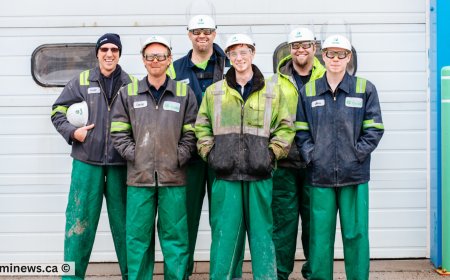Railway and motor transport labourers Canada Immigration Overview: Key Insights on Salaries, Employment, and Regional Advantages
Welcome to the pathway to Canada immigration for skilled professionals and trade workers. This guide is specifically tailored for Railway and motor transport labourers looking to work and settle in Canada, offering a deep dive into the essential aspects of immigration and employment in this field.
Introduction
Railway and motor transport labourers play a crucial role in the transportation industry by ensuring the smooth operation of railways and motor vehicles. In this article, we will provide an in-depth look at the career prospects and immigration opportunities available for individuals working in this field in Canada. We will discuss the profile description, main job duties, education and licence requirements, skills needed, median and retirement age, salary details, and possible visa options for railway and motor transport labourers under the National Occupation Classification code NOC 7622. Whether you are already working in this profession or considering a career change, this article will provide valuable insights into the opportunities available in Canada.
What is the Profile Description of a Railway and motor transport labourers as per the Canadian National Occupation Classification (NOC) Standards?
Railway and motor transport labourers play a crucial role in supporting track maintenance workers, railway yard workers, and motor transport operators. They are responsible for performing a range of tasks to ensure the smooth operation of railway and motor transport systems. These labourers are typically employed by railway transport companies and motor transport companies.
What are the Main Job Duties of a Railway and motor transport labourers in Canada?
- Railway and motor transport labourers assist in the maintenance of railway tracks by transporting tools and equipment on push or hand cars.
- They help in cutting vegetation growth from railway tracks using scythes and mowers.
- They inspect freight cars for physical damage and cleanliness to ensure safe transport of goods.
- They support truck and delivery drivers by loading and unloading vehicles, as well as performing labouring duties in warehouses.
What are the Education, Certifications, and Licensing Requirements to Work as Railway and motor transport labourers in Canada?
Typically, a high school diploma or equivalent is necessary for individuals pursuing a career as Railway and motor transport labourers.
What Essential Skills are Required for Railway and motor transport labourers to succeed in Canada?
Success in the profession of railway and motor transport labourers requires a variety of essential skills. These include the ability to transport tools and equipment on push or hand cars, assist railway track maintenance workers in laying, maintaining, and repairing railway tracks, cutting vegetation growth from railway tracks using scythes and mowers, checking freight cars for physical damage and cleanliness, shoveling snow from railway switch boxes, assisting trucks and delivery drivers in loading and unloading vehicles, and performing labouring duties in warehouses. Additionally, strong physical fitness, attention to detail, teamwork, and the ability to follow safety protocols are also crucial for success in this profession.
What is the Median Age and Retirement Age for Railway and motor transport labourers in Canada?
The skilled professionals working as Railway and motor transport labourers have a median age of 40 years, indicating that there is a relatively even distribution of ages within this workforce. The average retirement age for these workers is 62 years, providing insight into the typical timeframe for individuals in this profession to retire. This suggests that individuals in this field tend to have a relatively long career span before transitioning into retirement. It is important for employers to consider the age demographics of their workforce in order to effectively plan for recruitment, training, and succession planning within this industry.
How many job openings exist for Other Railway and motor transport labourers in Canada, and what's their provincial distribution?
There are a total of 78 job openings for the profile of Railway and motor transport labourers in Canada. The province of Québec has the highest number of job openings with 51 positions available, making it the top province for job opportunities in this field. British Columbia comes in second with 12 job openings, followed by Ontario with 9 job openings. Saskatchewan, Alberta, Manitoba, New Brunswick, and Nova Scotia each have 2, 1, 1, 1, and 1 job openings respectively. It is clear that Québec has the maximum number of job openings for Railway and motor transport labourers, while Alberta has the least number of job opportunities in this field. Candidates looking for opportunities in this field should focus on Québec, British Columbia, and Ontario for the highest chances of employment.
What is the hourly wage or salary of Railway and motor transport labourers in different Provinces of Canada?
When analyzing the wages of Railway and motor transport labourers in Canada, we can see significant variations across different provinces. In Nunavut, the wages for this profession are relatively lower with a high of $25.00, a median of $22.00, and a low of $16.00. On the other hand, British Columbia offers higher wages with a high of $30.03, a median of $20.95, and a low of $15.20. Alberta, Saskatchewan, and Manitoba also provide competitive wages ranging from $28.00 to $29.93 for the high end, $19.00 to $21.00 for the median, and $14.00 to $16.00 for the low end. In contrast, provinces like Quebec, Nova Scotia, and New Brunswick offer lower wages for Railway and motor transport labourers, with the high end reaching $28.80, $21.83, and $24.85 respectively. The median wages in these provinces range from $14.60 to $17.15, while the low wages range from $12.05 to $13.50. Overall, it is evident that there are significant differences in wages for Railway and motor transport labourers across provinces in Canada, with some regions offering more competitive compensation compared to others. This information can be valuable for individuals seeking employment in this profession and looking to maximize their earning potential.
What are the various visa options available for Railway and motor transport labourers migrating to Canada?
Railway and motor transport labourers are currently in high demand in Canada and may be eligible to apply for permanent residency through Category based Express Entry Invitation draws for Canadian PR under the Transport Occupations Category. The Express Entry system is a points-based system that ranks candidates based on factors such as age, education, work experience, and language proficiency. Additionally, Railway and motor transport labourers may also have the option to apply for provincial nomination programs or employer-sponsored work visas. Other visa options may also be available for individuals with this profession. To explore all the available options and to discuss your eligibility in detail, we recommend booking an appointment with our experienced immigration professionals.
Have Questions or Need Assistance?
If you have any queries or require assistance with your immigration plans, we're here to help. Our experienced immigration consultants are ready to provide personalized guidance tailored to your specific needs.
Don't hesitate to reach out and schedule an appointment today. Whether you're seeking clarification on immigration processes, exploring visa options, or need support with documentation, we're dedicated to assisting you every step of the way.
Book an appointment with our team to discuss your immigration goals and receive expert guidance for your journey to Canada.
What's Your Reaction?
 Like
0
Like
0
 Dislike
0
Dislike
0
 Love
0
Love
0
 Funny
0
Funny
0
 Angry
0
Angry
0
 Sad
0
Sad
0
 Wow
0
Wow
0





































































